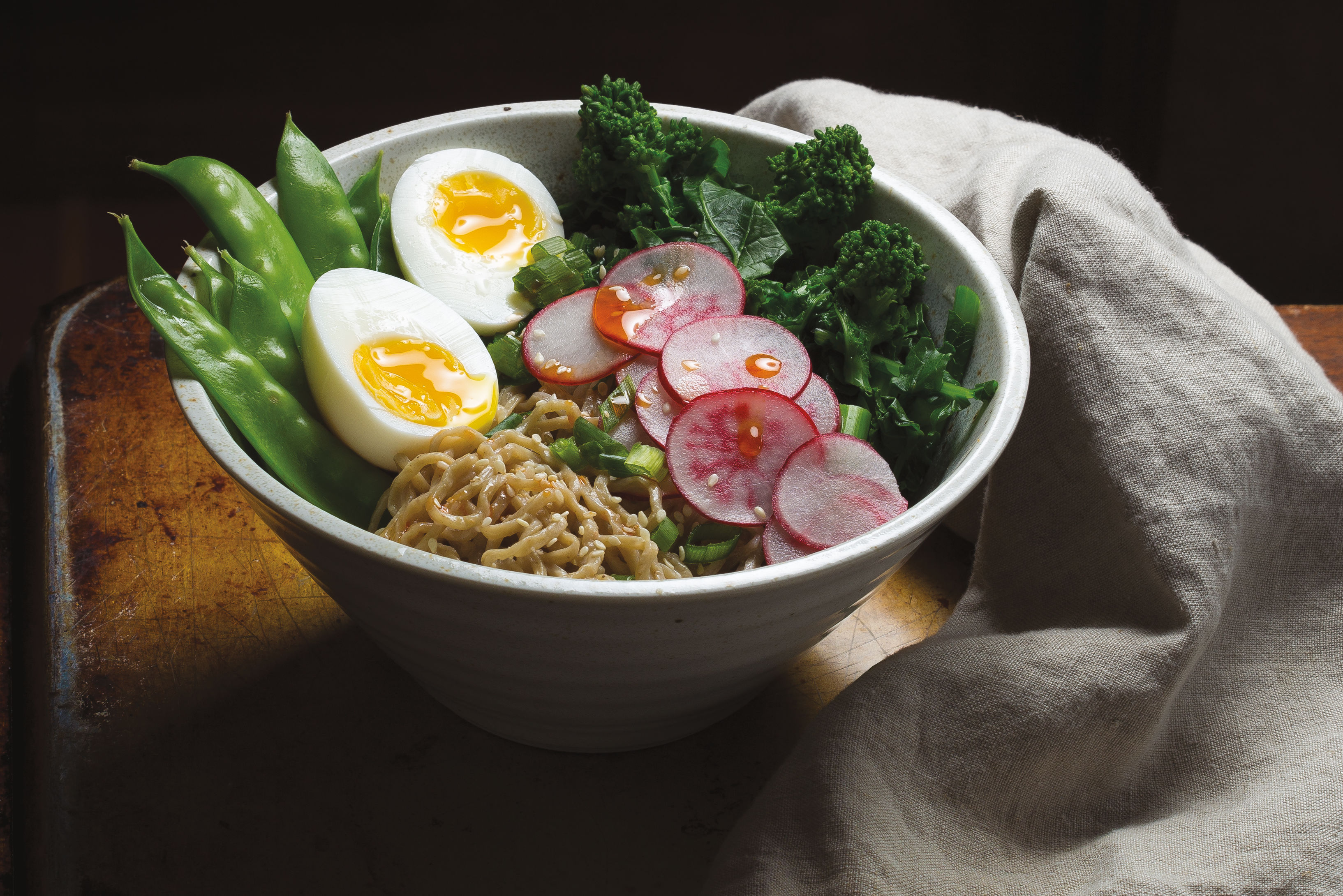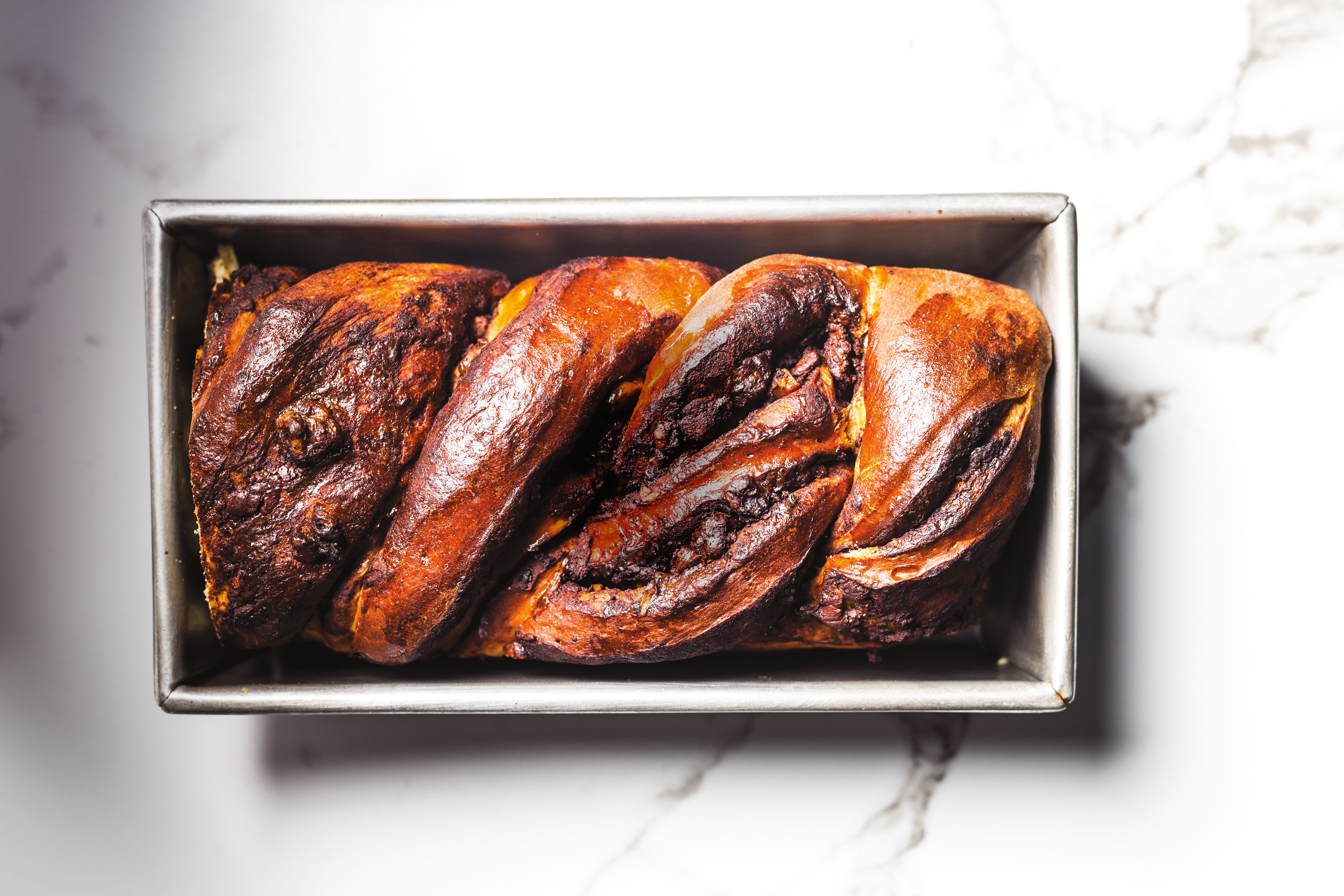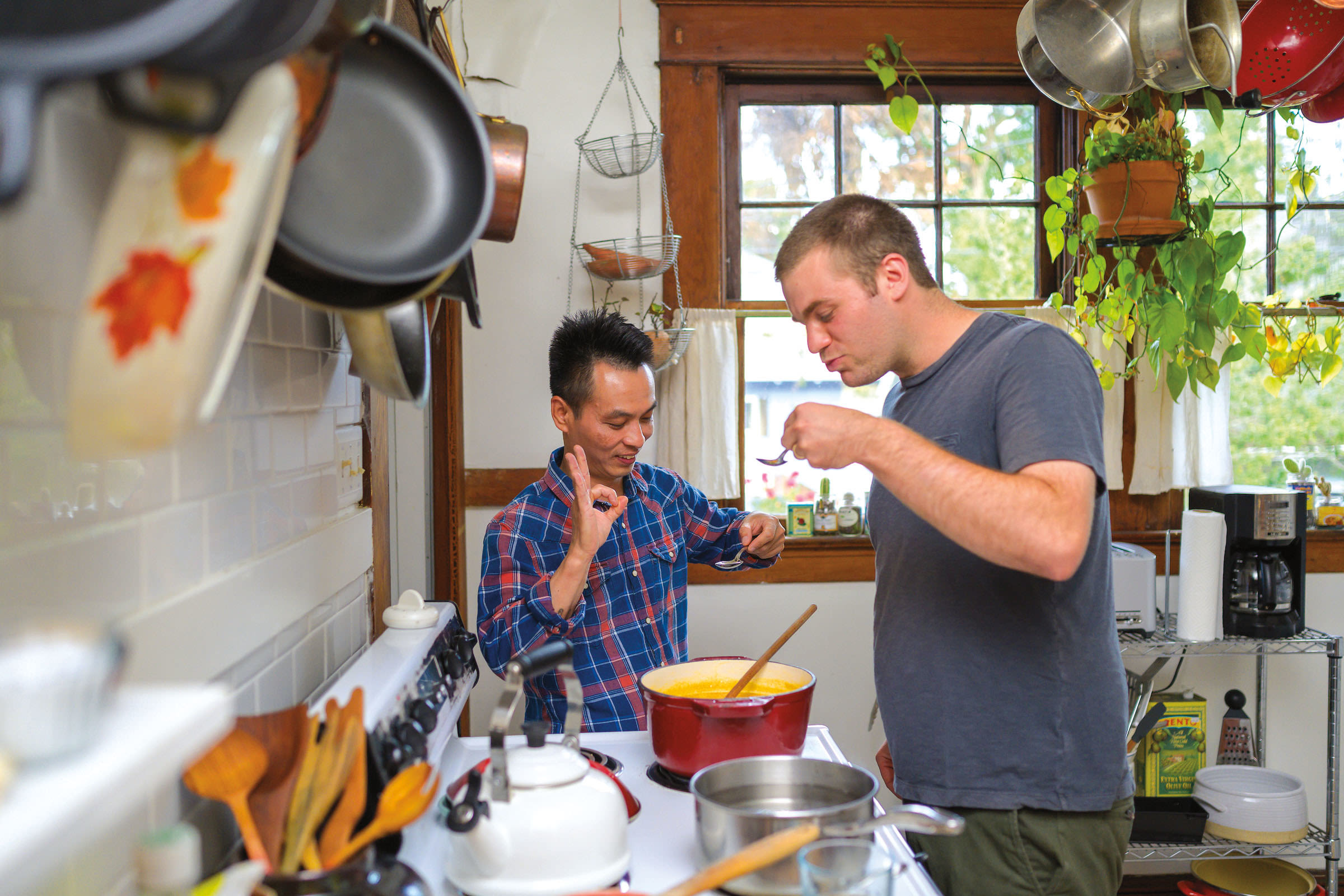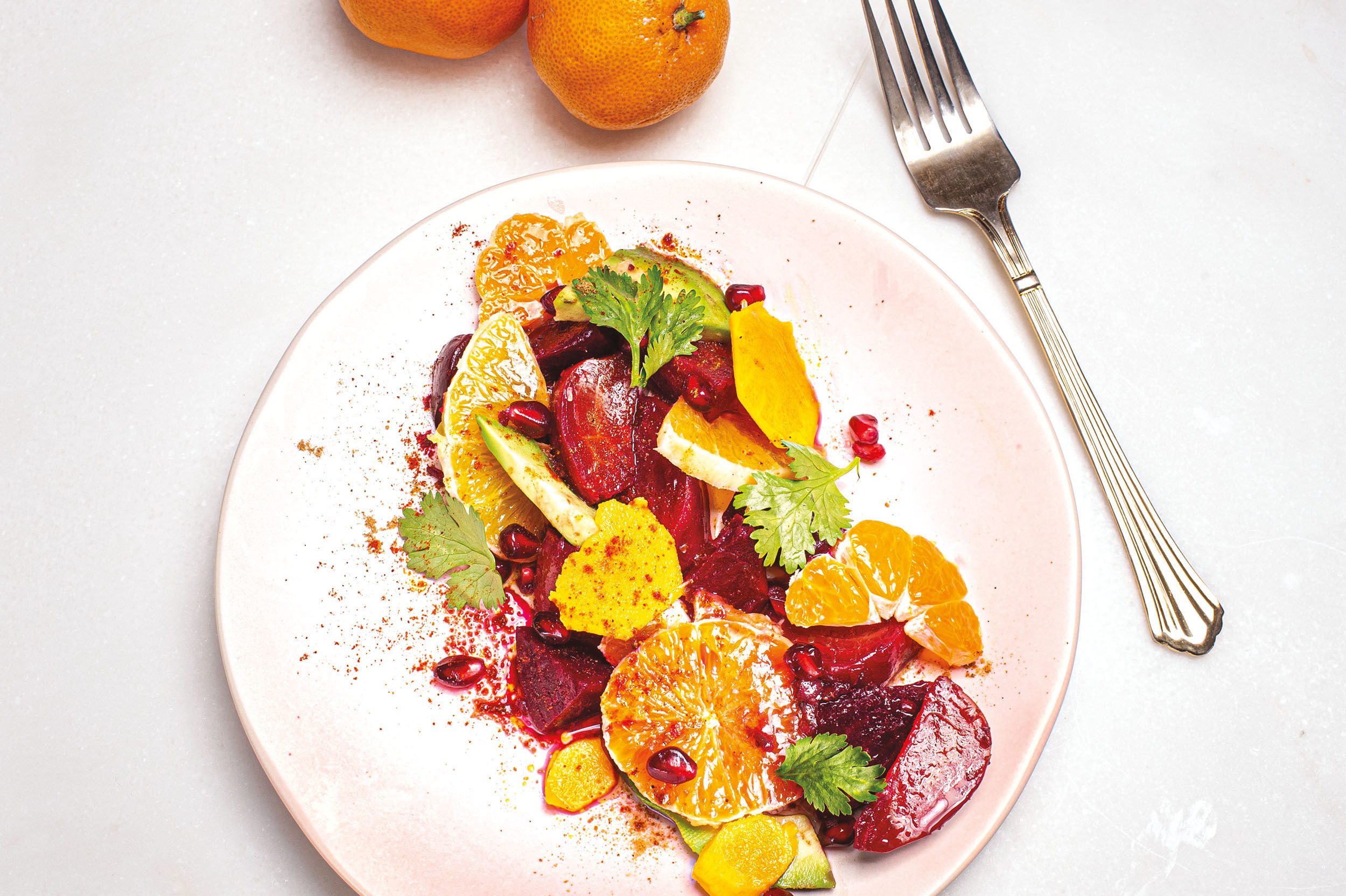Poached Leeks With Mustard Vinaigrette
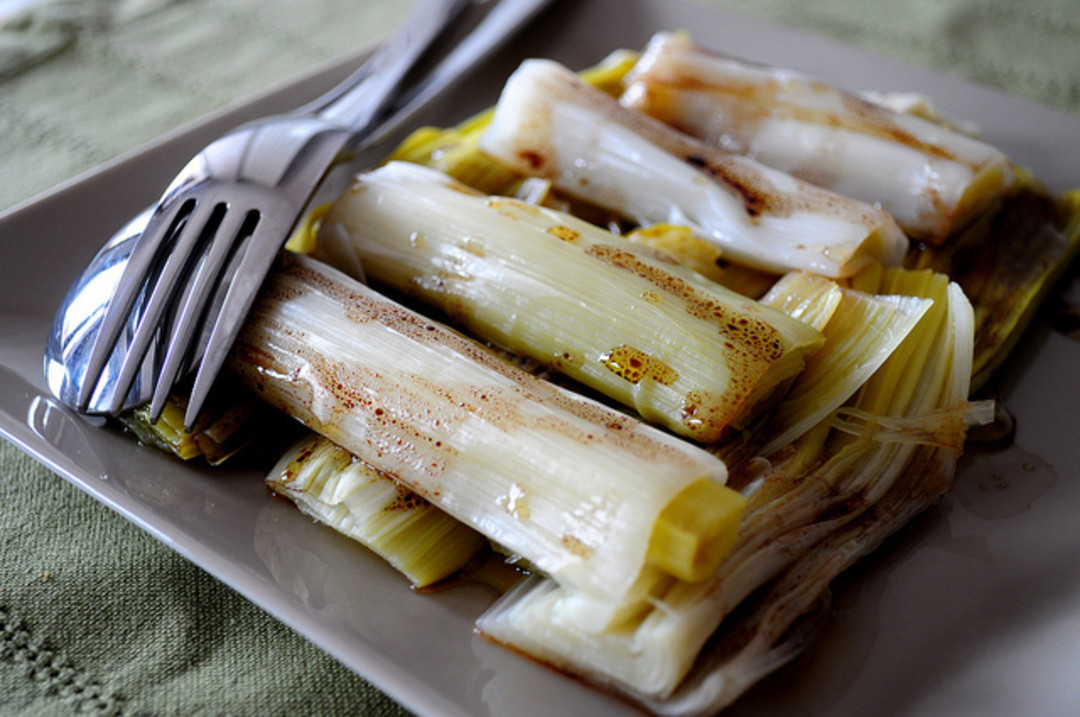
Image: Frédérique Voisin-Demery
The sweet, slender leek (Allium porrum) grew up as the invisible underdog in the lily family, constantly overshadowed by onion and garlic, its overbearing, bulbous cousins. Even the French, whose palates have been loyal to the humble shoots since at least the eighth century, refer to them as l’asperge du pauvre–the poor man’s asparagus.
Nonetheless, leeks have fortified cultures from China to Wales since at least 3000 BC, when Egyptians first cultivated them; in fact, they fueled workers laboring on the Great Pyramid. The Roman emperor Nero supposedly adhered to a daily diet of leeks soaked in oil to maintain what he believed to be the powerful timbre of his voice. In the seventh century, the Welsh developed a particular affinity for them when Welsh soldiers distinguished themselves from invading Saxons by garnishing their helmets with leeks. In celebration of their subsequent victory, the Welsh still decorate their hats each year on March 1.
It’s the French, however, who can be credited with elevating the leek’s status in the kitchen. Although the tender white bulb and rough green leaves have long been used to infuse court bouillons and pot-au-feu, the country’s most famous leek dish is vichyssoise, a chilled cream of leek and potato soup supposedly invented in 1917 by Louis Diat, a French chef working at New York City’s Ritz Carlton Hotel. But leeks don’t play their supporting role exclusively in soups; they often temper the pungent ingredients like Gorgonzola or wild chanterelles that serve as filler for savory tarts, and when steamed with white wine, they subtly enhance the sweetness of clams or mussels.
Despite the leek’s tendency to play second fiddle in the specialties that have brought it understated fame, there is perhaps no better way to appreciate the earthy, toothsome succulence of a sun-kissed leek picked at the peak of ripeness than to prepare a plate of poireaux vinaigrette. The mustard’s tanginess and the mellow creaminess of grated hard-boiled eggs allow the tender, salted poached leek to shine like the rich little poor boy it’s always been at heart.

Poireaux Vinaigrette
This recipe is from Pascal Sauton, chef and owner of the French bistro Carafe. Sauton buys leeks with at least 12-15 inches of white tender shoots and very little green. If the leeks you’ve bought have less white and more green, you may need to use one or two more leeks. Use discarded green tops to make stock.
INGREDIENTS
1/4 cup coarse sea salt
2 medium leeks
1 tbsp high-quality Dijon mustard (preferably Fallot brand)
1 tbsp sherry vinegar
1/3 cup canola oil
Fine sea salt and freshly ground black peppercorns to taste
1 hard-boiled egg
1 tbsp minced chives
(1) Boil 1 gallon water in a pot with the coarse sea salt.
(2) Peel off the first leaf or two of each leek; cut off roots and dark green tops (leaving 1-2 inches of the pale green portion). Wash leeks well under cold water. Slice each leek crosswise into 3-to-4-inch sections.
(3) Once the water has come to a boil, turn down heat to medium. Add the leeks and cook until just tender, about 10-15 minutes.
(4) Place the mustard and the vinegar in a small mixing bowl. Whisk the mixture vigorously, and add the canola oil slowly. Continue to whisk until a creamy emulsion has formed. Season with fine sea salt and freshly ground black peppercorns to taste. Set aside.
(5) When they are tender, drain the leeks, then place them in a bowl of ice water to cool. Let sit for 5 minutes. Drain the leeks again, then gently squeeze them to allow residual water to escape. Pat dry with paper towels.
